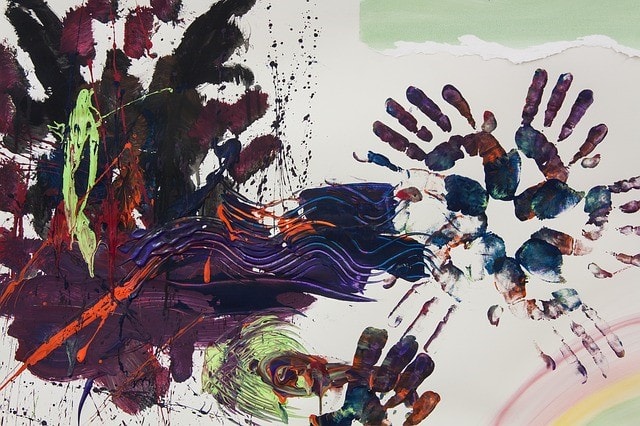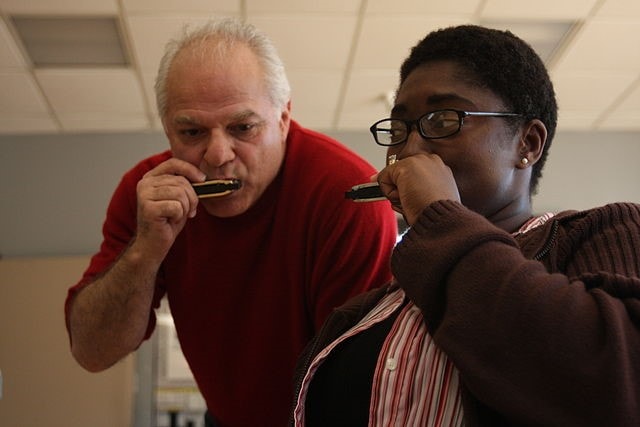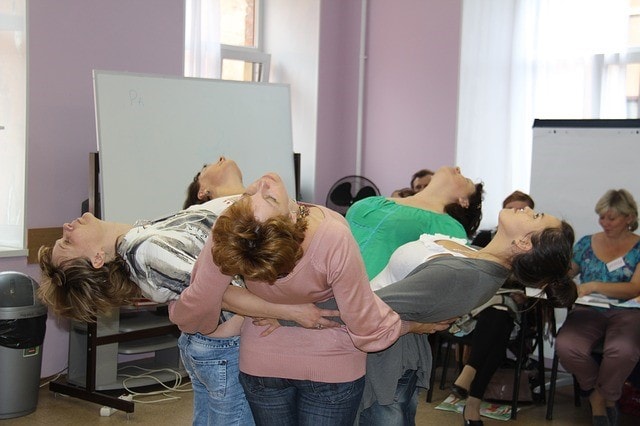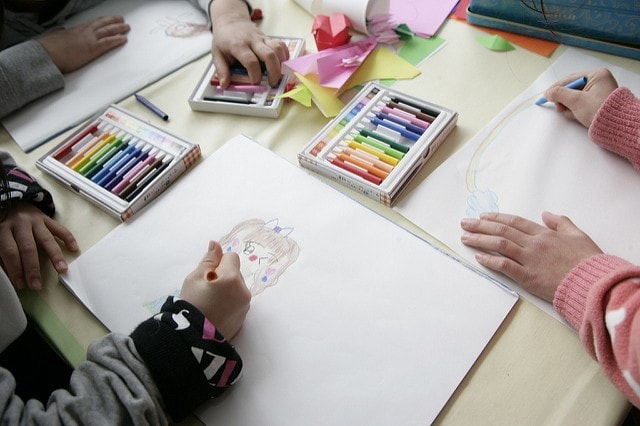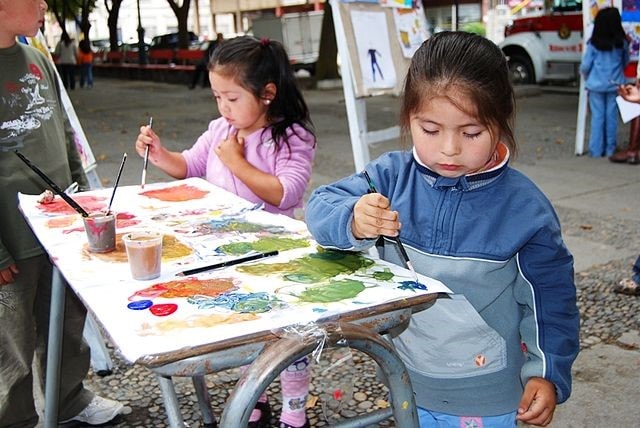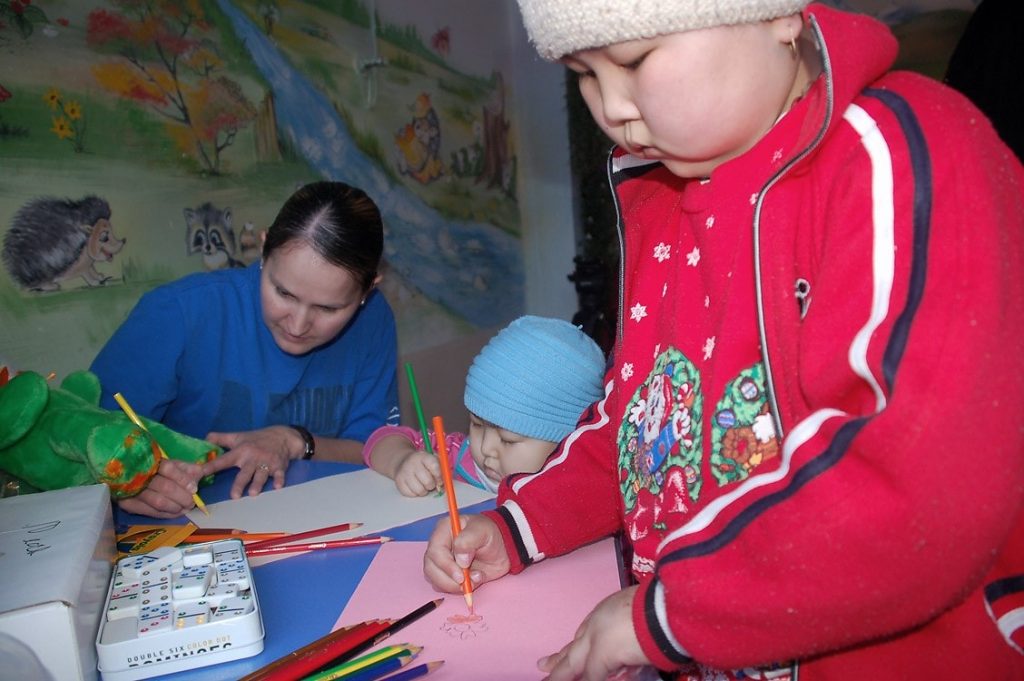Art is my cure to all this madness, sadness and loss of belonging in the world & through it I’ll walk myself home.
― Nikki Rowe
In this Art Therapy Guide We Will Cover
[toc]
Tapping into your creative side can do more for your mind and health than you might think. In fact, when you get creative through art therapy, you give yourself the opportunity to heal from a variety of conditions.
Art therapy classes and one-on-one art therapy instruction have proven to be therapeutic for people who have experienced trauma, lost a loved one, have severe anxiety, or have had other experiences or conditions that impact their daily lives in some way.
This therapy is a form of psychotherapy that can help people share their emotions and communicate in a way that’s not overwhelming. This guide will help you understand art as a therapy, how it works for various people and conditions, and how to start art therapy for you, a loved one, or as part of an organization.
What is Art Therapy?
Photo by Stux licensed under CC0 1.0
Art therapy is the process of using some form of art to help people work through issues relating to mental health, trauma, and more. Unlike visiting a regular therapist who will talk through problems a person faces, the person can use art to help communicate his emotions and work through them in a way that might be more comforting for some individuals.
The idea behind this form of therapy is that it can give people many of the same benefits as counseling, but in a way that feels non-threatening. An art therapist can translate the meaning of an individual’s art, rather than asking the person to share his feelings when he might not be ready to do so.
Additionally, art healing can come from art as therapy. Research has shown that creating art can have significant benefits for those with mental health conditions, developmental disabilities, and more.
Who Can Benefit from Art Therapy?
Art therapy can benefit a wide range of people of any age. This form of treatment is versatile in that it can reach young children and the elderly equally. Furthermore, art has the power to reach people from various backgrounds with different conditions or circumstances because, through therapy, it can tap into the mixed emotions people have in ways that make sense for each individual.
Those who participate in art therapy typically feel safer than they would in a one-on-one or group therapy talking session. There’s no need to explain one’s feelings. Instead, participants will complete a project based on the therapist’s instructions. The therapist can then decode the final project to further help an individual work through her emotions without that person having to feel vulnerable.
Types of Art Therapy
There are virtually endless types of art therapy that people can participate in. In fact, this type of therapy is relatively fluid, in that any therapist can potentially create new forms of therapy using art. You can even combine various art mediums to create new forms of art for one class or session.
Basically, any form of art is eligible for use in art therapy, from coloring and painting to sculpting or woodworking. However, there are several art therapy techniques and applications that you’ll more commonly see in classes and sessions that we will detail below.
Music Therapy
Photo by Lance Cpl. Lisa M. Tourtelot licensed under CC0 1.0
Some people think of music therapy as a form of treatment all on its own. It can fall within the category of art therapy, too, because music is technically an art form. Music therapy can improve the health of people suffering from illness, both physically and mentally, while also boosting their quality of life by enhancing their mood.
Music therapy involves using music to either relax or stimulate the mind. Soothing music, for example, may calm someone with anxiety by keeping them relaxed while they work through something that’s causing them to feel worried. Upbeat, positive music can make someone with depression feel happy. A song that reminds someone of a recently lost loved one might evoke buried emotions that needed to resurface in a safe and therapeutic way.
Music therapists may also teach patients to play instruments, write songs, or create beats as forms of coping methods.
Dance and Movement
Photo by vino_tinto26 licensed under CC0 1.0
Dance therapy is also sometimes referred to as movement therapy because ‘dance’ can be a term that limits this form of treatment. Although some therapists do use dance to assist patients, the primary focus of this therapy is to get patients to use their bodies in some way that can help them heal. Dance therapy can look very different for different patients and the therapists who use it.
According to the American Dance Therapy Association, body movement acts as the medium for healing and also as an assessment tool for a therapist to work with a patient. Those with mental, physical, psychological, and developmental impairments may benefit from movement therapies.
In a typical session, you might see therapists instructing patients to use improvisational dance to release emotions or very controlled body movements that focus on mindfulness through breathing, meditation, and more.
Photo Therapy
Phototherapy, also known as therapeutic photography, can help people see their lives through new perspectives. Photography skills aren’t necessary to benefit from this form of therapy. In fact, many patients might discover a new passion for photography after participating in phototherapy sessions.
Therapeutic photography is a visual form of art therapy that may benefit people who have trouble communicating their wants and needs. Phototherapy is particularly useful for bringing positive changes to individuals in their relationships with others, their communities, and the world around them.
Therapists who work with people through phototherapy typically assist them in digging deep into their photos to draw out essential memories or emotions that can help them move forward with the therapy process.
Painting or Drawing
Photo by Save the Children Canada licensed under CC BY 2.0
Painting and drawing are two of the most common forms of art therapy. Since almost anyone can pick up a pencil or paintbrush and start creating art, this technique is often used as an icebreaker for the first one or two art therapy sessions before moving onto other art mediums.
Painting and drawing can also be the most open-ended art mediums. A therapist might ask a patient to draw or paint something specific if he wants to learn more about one aspect of a patient’s life, for example. Or, he could ask participants something more abstract, like “Draw something that’s scaring you right now in your life.”
Either way, the intent is to give participants a medium to express their thoughts on the current subject in their therapy session through art rather than words. Drawing and painting have proven positive mental healing effects for making people feel more connected to themselves and each other and helping them see good come from bad experiences.
Digital Art
Digital art therapy is a more modern take on traditional art therapies that involved conventional art methods, like painting and drawing. Rather than use physical art tools, digital art requires patients to use technology, like computers and tablets, to create digital masterpieces.
This form of therapy works similar to more traditional methods in that it allows patients to be expressive in their own way. The main difference is that they’ll use digital tools to create, rather than markets, pencils, or paintbrushes.
However, the digital aspect can give patients even more creative freedom. They can opt to use imaging software, for example, to create collages or manipulate digital images into something more fitting for their final piece. Patients can also play around with an endless spectrum of color to more accurately present their feelings through digital creations.
Sculpture
Sculpture therapy is also known as family sculpting because it typically involves family members making statues of each other in a private therapy setting. Most often, married couples and parents and children attend these sessions together and work with a therapist to create sculptures using a set of instructions.
Individuals usually use modeling clay to form a sculpture of their loved ones. Often, therapists leave the statues relatively open-ended so that each family member can express their creativity and personality as much as possible through their art.
This technique can help the therapist interpret how an individual might view his role within the family and what feelings he might have about his other family members. Using the information, she collects from each family member, the therapist might be able to gain insight into the family’s dynamics to assist them through therapy.
Collage
Collage art therapy is one of the least intimidating forms because it allows some of the most creativity with no need for artistic skills. Collaging involves having participants cut and paste pieces of paper, fabric, or other materials on a paper or board to create something new.
Additionally, collages can help participants communicate their thoughts more efficiently by finding pictures or fabrics with a specific color or texture that can best express their emotions.
Therapists differ in the way they present collage work to their patients. Some might pre-cut images and materials, while others will supply the materials and allow the patients to cut them. Both methods can give valuable insight into a patient’s brain by studying how they interact with the materials and how they create their finished product.
Writing or Journaling
Some people might find writing to be the best form of artistic and therapeutic expression. Research has shown that when patients with chronic conditions write about their stress and emotions, they can, in turn, decrease their stress levels and improve their overall health.
Writing is also a very personal form of therapy that can bring out a person’s deepest thoughts and present them to a therapist without voicing them. More importantly, even the act of writing can help patients release thoughts that have been on their minds.
There are several forms of writing that a therapist might use in this type of therapy, such as journaling, writing poetry, writing song lyrics, or even penning letters to influential people in a patient’s life.
Object
Therapists may host art sessions in which they ask participants to bring in objects that have meaning to them to create something new with. A therapy group for mothers who have lost infants, for example, might have an activity that involves turning a baby blanket into a keepsake in memory of the participants’ babies.
Other object art therapy sessions will focus more on using objects participants find on a walk or around their homes. These objects can be anything from something that randomly struck the interest of the person to an object that might remind the person of a beloved memory or a traumatic life event.
The idea of object therapy is to work through troubling memories and challenges by turning something old into something new in a positive way.
Art Therapy For Children
Photo by Municipalidad de Talcahuano licensed under CC BY-SA 2.0
Art therapy for children can be a little different than it is for adults because therapists need to adapt their activities to kid-friendly activities that make them feel safe and important. Often, kid-focused art therapy can involve some play combined with various art mediums to allow children to express their creative sides.
Some therapists like to use an art therapy coloring book with kids during some sessions, or at least at the beginning of sessions, to relax their minds. Then, they might move onto painting, sculpting, collage work, and other forms of art to help children express their ideas.
This form of therapy can especially help children make sense of traumatic events that have happened in their lives with the support of their therapist.
Groups
While many art therapy sessions take place one-on-one or in private groups of family members, others take place in a group setting. Sometimes, art therapy in a group setting can provide more benefits than individual treatment, depending on the situations of the people involved.
Group art therapy has the potential to increase communication skills in patients and assist them in becoming more social and comfortable explaining their thoughts to others. As individuals work in group therapy, they can freely interact with each other as much as their comfort levels allow.
Most group art therapy sessions invite individuals with a specific condition or trauma so that individuals can benefit from being in a group with their peers who have had similar experiences. Doing so can help them work through challenges together by bouncing ideas and thoughts off one another.
Art Therapy Applications
Art therapy has proven time and again to benefit people with various conditions, life situations, mental health challenges, and more. The following conditions and experiences are some that research has proven to have benefited from multiple forms of art therapy. Here, we include data from scientific studies that have found art therapy to impact the participants involved positively.
Stress and Anxiety
One of the most common applications for art therapy is for use to calm people with high stress levels or anxiety. For those with anxiety, communicating the causes of worry or panic can be a challenge. Art therapists use various art mediums to reach out to patients with mild to severe anxiety symptoms to help them verbalize their concerns in ways that feel comfortable to them.
A 2014 study published in The Arts in Psychotherapy found that art therapy was successful in assisting patients with different anxiety disorders. The patients tracked their anxiety symptoms throughout the study, one with a symptom diary and the other via a verbal recording of her anxiety levels. The two patients who participated in the study experienced fewer anxiety symptoms, like panic attacks and agoraphobia, over the course of the period of art therapy.
Depression
People with clinical depression can experience such severe symptoms that can prevent them from being social or finding joy in their lives and may even lead to things like substance abuse or suicide. Art therapy can be a tool that gives people with depression a powerful outlet for creativity to safely explain their feelings in a healing, therapeutic way.
A study from the University of Gothenburg followed patients with moderate-severe to severe depression as they participated in ten sessions of art therapy. Their depression levels were charted on a scale. After the ten hour-long sessions of treatment, the patients rated their depression levels as improved. Some were even able to return to work after suffering from severe depression that hindered their ability to do so previously.
Trauma and Traumatic Brain Injury
The effects of art therapy for trauma and people who have suffered a traumatic brain injury can be significant. Research has shown that art therapy sessions can be beneficial for children who have experienced trauma specifically from domestic violence in their homes. Not only can experts make necessary inferences from a child’s artwork that can explain some of what he or she has witnessed, but the child can also gain a sense of control over his or environment through art.
The Walter Reed National Military Medical Center has programs in place to give military personnel who have suffered a traumatic brain injury (TBI) some emotional support as they work through other therapies and recovery. Therapists initially use art to help patients relax, feel less pain, and develop better sleep patterns, gradually moving onto using art as a therapeutic medium for improved mental health.
Grief
Because of its ability to connect the brain with the heart, art can be a powerful tool to help those stricken with grief. Whether a loved one passed, or a person experienced some other trauma in their life, art therapy may give them an outlet for their bottled-up emotions and may even spark crucial conversations to help them deal with their grief.
One case study followed a 14-year-old girl who began art therapy for behavioral issues and to cope with her mother’s terminal illness. During the session period, the mother passed. The therapy sessions allowed the teen to grieve through the creative process and find a special connection to her mother even after her death. The therapist noted that the girl could safely externalize her anxieties through various art mediums.
Dementia
Dementia can take on many forms, like Alzheimer’s disease and Huntington’s disease, but each of them affects a person’s memory and mental processes in different ways. Music and various forms of art are thought to stimulate a patient’s mind, cognitive function, alertness, and more, to reduce some of the symptoms of dementia and improve the quality of life.
In one study, a therapist gave dementia patients three weeks of art therapy that included weekly 30-minute sessions in an art gallery and 60-minute sessions creating art in different forms. The therapist sparked conversations during sessions with patients and often found that they were able to recall art they remember liking in the gallery, suggesting that the therapy sessions may have improved their memory and cognitive function.
Schizophrenia
Schizophrenia is a mental dysfunction that can cause hallucinations, erratic behaviors, and faulty perceptions of themselves, others, and the world around them. Art therapy is sometimes used as a method to improve communication skills, emotions, and behaviors in patients with schizophrenia.
One 45-year-old man with schizophrenia and a history of other mental health conditions participated in a series of art therapy sessions to relax him, help him see things more realistically, overcome fears, and improve other symptoms. Although the patient decided not to continue with sessions, he was more able to communicate with others and discuss his fears after treatment.
Cancer Care
Photo by U.S. Air Force/Tech. Sgt. Phyllis Hanson licensed under CC0 1.0
Cancer patients have, according to research, benefited significantly from art therapy to lessen the symptoms of chemotherapy and prevent or improve depression.
Children with leukemia have benefited from art therapy in that it gave them a sense of control and helped them externalize fears associated with their disease and treatment.
Another study focused on sixty cancer patients who underwent chemotherapy treatments. They had weekly art therapy sessions, some of the patients participating in four or more meetings while others participated in one or two sessions. Those who participated in more meetings experienced fewer depression symptoms when scaled using the Hospital Anxiety Depression Scale (HADS).
Attention-Deficit Hyperactivity Disorder (ADHD)
Children and adults with ADHD typically face challenges focusing, sitting still, and controlling their behaviors. Art therapists can use various art mediums for people with ADHD to bring positive changes in behavior through creative outlets.
One study published in Art Therapy: Journal of the American Art Therapy Association, found that using mandala art exercises, which are abstract designs that you can color or draw, helped children with ADHD and ADD improve their attention and focusing skills and have more positive behavior changes over time.
Autism
Photo by U.S. Air Force /Staff Sgt. Carolyn Viss licensed under CC0 1.0
Art therapy for autism is something that researchers continue to study, but some research suggests that art can provide an essential intervention for adults and children with autism. In addition to the benefits of a child building a relationship with an art therapist, the child may also gain improved communication skills and language development through art therapy.
People with autism tend to struggle understanding abstract concepts. Visual pieces of art may not only help those with autism better understand their own feelings, but they can also help therapists understand things the individual might not be able to communicate on his own.
Post-Traumatic Stress Disorder (PTSD)
Art therapy for PTSD patients has been at the forefront of art therapy research for years. Post-traumatic stress disorder can occur after a person has experienced some type of traumatic event, like a car accident, robbery, or sexual assault. It’s often seen in military personnel after being in combat or witnessing death.
One case study examined a senior military member with PTSD symptoms and the effect that art therapy had on him. The patient noted that, after creating his first piece of art and discussing it, he felt that the session was “incredibly therapeutic” for him.
Chronic or Terminal Illness
For people with a chronic or terminal illness, it’s common for them to feel as if they’re not in control of their own body or life. Disease can take over quickly, leaving a person with both physical and emotional pain. Some therapists believe that art therapy can help those with chronic or terminal illnesses regain some control over their lives.
A study of 177 patients with terminal illness showed that, during art therapy sessions, 70 percent of patients felt as though their emotional health had improved, and 53.1 percent of patients felt an improvement in their physical health.
Disaster Relief
After facing a natural disaster, school shooting, or some other form of large-scale trauma, survivors need robust support systems to recover. Some research suggests that art therapy can help patients move further away from the recent impact of the event by giving them a creative outlet to assist them in starting the recovery process.
A research review noted that children, primarily, can benefit from art therapy after a disaster. Art projects that children worked with helped them cope with their feelings, communicate their fears, and make sense of their trauma, grief, and/or loss resulting from the event.
Substance Abuse
Several types of therapy can help substance abuse patients overcome their addictions, and art therapy is sometimes a part of an addict’s 12-step program toward recovery. Therapists sometimes introduce this therapy in the first step, which works toward helping an addict admit that he or she has an addiction that consumes them.
A study in the American Journal of Art Therapy focused on six patients who participated in art therapy as part of their 12-step programs. After the study, the patients noted that they believed that art therapy helped them make it through the first step in their programs successfully.
Prisons
Many jails adopt programs that keep prisoners busy in productive and therapeutic ways. Some prisons have implemented art therapy programs to give prisoners a healthy, safe outlet that can help them make sense of their past behaviors and turn to creating more positive actions.
A study published in Justice Policy journal found that art therapy gave the prisoner participants a higher level of self-confidence, more motivation, better emotional control, and more productive time management skills than they previously had.
How to Get Started with Art Therapy
Are you looking for some art therapy ideas to incorporate into your workplace or program? Fortunately, this form of therapy is something that you’ll likely find easy to begin and maintain.
Your first step will be to locate a licensed art therapist who can conduct group or individual sessions. A trained therapist will know what activities may work best for different people and their situations and can also use their training to assess pieces of artwork to further the therapy process.
You can speak with a licensed art therapist to discuss what art mediums will work best for your program and whether an individual or group session might be the most beneficial.
The American Art Therapy Association is a great place to find professionals and to learn more about implementing an art therapy program.
Conclusion: The Benefits of Art Therapy for Various Disorders and Situations
Art therapy takes on many forms using several artistic mediums, and some therapists may implement a combination of art mediums to tailor each session to the individuals involved. With the guidance of a professional art therapist, patients can discover more about themselves, their place in their circles closest to them and in the world, and how to cope with their current situation.
Art therapy has a significant number of benefits for people in a wide range of situations or with various conditions that may limit their ability to function correctly in their everyday lives. From young children to seniors, people of all ages can reap the physical, mental, social, and emotional benefits that art therapy can provide.



